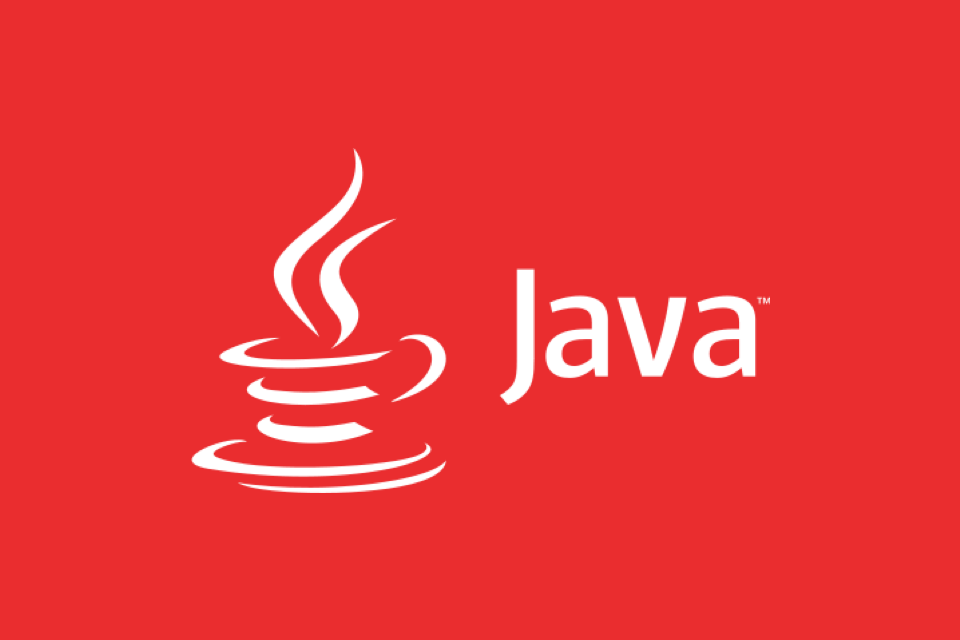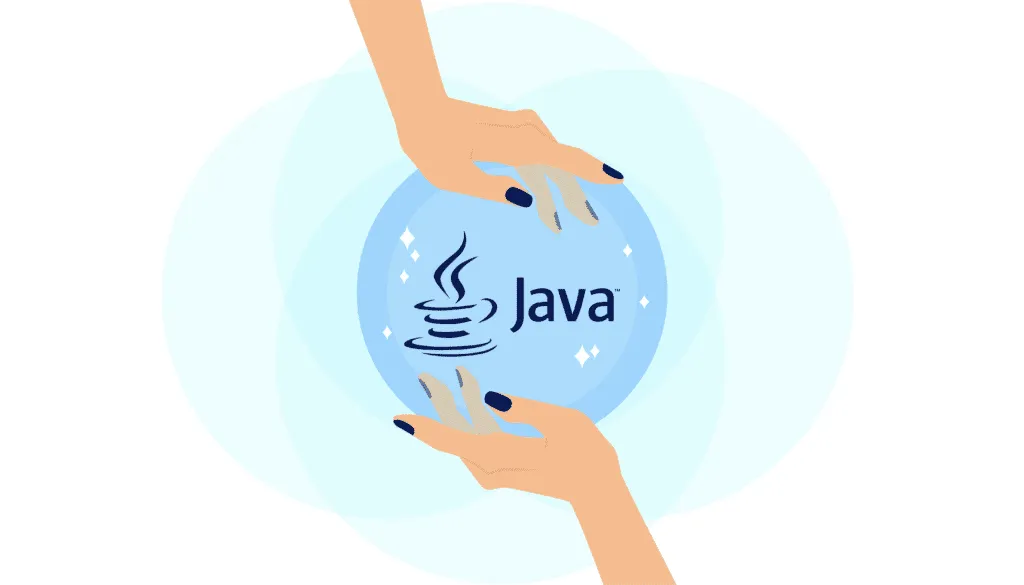In Java, == compares object references while .equals() checks for value equality. 1. == verifies if two variables point to the same memory instance, returning false for distinct objects with similar content. 2. .equals() evaluates logical equality based on values, but relies on proper method overriding in classes like String or custom types. 3. For wrapper types within -128 to 127, == may return true due to caching, but using .equals() is safer for consistent comparisons. 4. Best practices include using == for primitives or identity checks and .equals() for content-based comparisons, ensuring null safety via Objects.equals().

In Java, == and .equals() are often confused because both can be used to compare things, but they do very different jobs.

== checks if two references point to the same object in memory..equals() is meant to check if two objects are "equal" in value, though exactly what that means depends on how the method is implemented in the class you're using.

Now let's break it down into more practical terms.
Comparing with ==: It's about identity
When you use == with objects in Java, you're checking whether the two variables refer to the exact same object in memory.

String a = new String("hello");
String b = new String("hello");
System.out.println(a == b); // falseEven though both contain the same text, a and b are two separate objects created with new, so == returns false.
Where this matters most:
- When comparing primitive types like
int,==works fine. - When working with small wrapper types (like
Integer) within a certain range (-128 to 127), Java may cache values, so==might returntrueunexpectedly.
So, don’t rely on == for checking logical equality of objects unless you specifically want to confirm they are the same instance.
Using .equals(): It’s about content or meaning
The .equals() method is designed to check if two objects are equal based on their contents or business logic. For example, two strings are considered equal if they have the same sequence of characters.
String a = new String("hello");
String b = new String("hello");
System.out.println(a.equals(b)); // trueThis time, the result is true because .equals() compares the actual string values.
Important notes:
- The default implementation of
.equals()in theObjectclass behaves like==. - To get meaningful comparisons, classes like
String,Integer, or your own custom classes must override.equals().
If you create your own class and want .equals() to work properly, you’ll also need to override it — and usually hashCode() too, to maintain the contract between them.
Common gotchas and best practices
Here are some real-world situations where mixing up == and .equals() can cause bugs:
Strings interned vs. not:
String a = "hello"; String b = "hello"; System.out.println(a == b); // true
This works because string literals are pooled by Java — called interning — so
aandbpoint to the same object.Comparing wrappers like Integer:
Integer x = 127; Integer y = 127; System.out.println(x == y); // true Integer m = 128; Integer n = 128; System.out.println(m == n); // false
Java caches
Integervalues from -128 to 127, so using==inside that range can work — but outside, it doesn’t. So better to always use.equals()when comparing wrapper types.Best habits:
- Use
==only for primitives or when you really want to check if two references are the same object. - Use
.equals()for comparing object values — especially strings and collections. - Always make sure the object isn’t
nullbefore calling.equals()to avoidNullPointerException. You can useObjects.equals(a, b)to safely compare.
Basically, just remember:
==cares where things live in memory, and.equals()cares what the values are. And yes, it’s easy to mix them up — especially with Strings and wrappers.The above is the detailed content of What is the difference between == and .equals() in Java?. For more information, please follow other related articles on the PHP Chinese website!
- Use

Hot AI Tools

Undress AI Tool
Undress images for free

Undresser.AI Undress
AI-powered app for creating realistic nude photos

AI Clothes Remover
Online AI tool for removing clothes from photos.

Clothoff.io
AI clothes remover

Video Face Swap
Swap faces in any video effortlessly with our completely free AI face swap tool!

Hot Article

Hot Tools

Notepad++7.3.1
Easy-to-use and free code editor

SublimeText3 Chinese version
Chinese version, very easy to use

Zend Studio 13.0.1
Powerful PHP integrated development environment

Dreamweaver CS6
Visual web development tools

SublimeText3 Mac version
God-level code editing software (SublimeText3)

Hot Topics
 Difference between HashMap and Hashtable?
Jun 24, 2025 pm 09:41 PM
Difference between HashMap and Hashtable?
Jun 24, 2025 pm 09:41 PM
The difference between HashMap and Hashtable is mainly reflected in thread safety, null value support and performance. 1. In terms of thread safety, Hashtable is thread-safe, and its methods are mostly synchronous methods, while HashMap does not perform synchronization processing, which is not thread-safe; 2. In terms of null value support, HashMap allows one null key and multiple null values, while Hashtable does not allow null keys or values, otherwise a NullPointerException will be thrown; 3. In terms of performance, HashMap is more efficient because there is no synchronization mechanism, and Hashtable has a low locking performance for each operation. It is recommended to use ConcurrentHashMap instead.
 What are static methods in interfaces?
Jun 24, 2025 pm 10:57 PM
What are static methods in interfaces?
Jun 24, 2025 pm 10:57 PM
StaticmethodsininterfaceswereintroducedinJava8toallowutilityfunctionswithintheinterfaceitself.BeforeJava8,suchfunctionsrequiredseparatehelperclasses,leadingtodisorganizedcode.Now,staticmethodsprovidethreekeybenefits:1)theyenableutilitymethodsdirectly
 How does JIT compiler optimize code?
Jun 24, 2025 pm 10:45 PM
How does JIT compiler optimize code?
Jun 24, 2025 pm 10:45 PM
The JIT compiler optimizes code through four methods: method inline, hot spot detection and compilation, type speculation and devirtualization, and redundant operation elimination. 1. Method inline reduces call overhead and inserts frequently called small methods directly into the call; 2. Hot spot detection and high-frequency code execution and centrally optimize it to save resources; 3. Type speculation collects runtime type information to achieve devirtualization calls, improving efficiency; 4. Redundant operations eliminate useless calculations and inspections based on operational data deletion, enhancing performance.
 What is an instance initializer block?
Jun 25, 2025 pm 12:21 PM
What is an instance initializer block?
Jun 25, 2025 pm 12:21 PM
Instance initialization blocks are used in Java to run initialization logic when creating objects, which are executed before the constructor. It is suitable for scenarios where multiple constructors share initialization code, complex field initialization, or anonymous class initialization scenarios. Unlike static initialization blocks, it is executed every time it is instantiated, while static initialization blocks only run once when the class is loaded.
 What is the Factory pattern?
Jun 24, 2025 pm 11:29 PM
What is the Factory pattern?
Jun 24, 2025 pm 11:29 PM
Factory mode is used to encapsulate object creation logic, making the code more flexible, easy to maintain, and loosely coupled. The core answer is: by centrally managing object creation logic, hiding implementation details, and supporting the creation of multiple related objects. The specific description is as follows: the factory mode handes object creation to a special factory class or method for processing, avoiding the use of newClass() directly; it is suitable for scenarios where multiple types of related objects are created, creation logic may change, and implementation details need to be hidden; for example, in the payment processor, Stripe, PayPal and other instances are created through factories; its implementation includes the object returned by the factory class based on input parameters, and all objects realize a common interface; common variants include simple factories, factory methods and abstract factories, which are suitable for different complexities.
 What is the `final` keyword for variables?
Jun 24, 2025 pm 07:29 PM
What is the `final` keyword for variables?
Jun 24, 2025 pm 07:29 PM
InJava,thefinalkeywordpreventsavariable’svaluefrombeingchangedafterassignment,butitsbehaviordiffersforprimitivesandobjectreferences.Forprimitivevariables,finalmakesthevalueconstant,asinfinalintMAX_SPEED=100;wherereassignmentcausesanerror.Forobjectref
 What is type casting?
Jun 24, 2025 pm 11:09 PM
What is type casting?
Jun 24, 2025 pm 11:09 PM
There are two types of conversion: implicit and explicit. 1. Implicit conversion occurs automatically, such as converting int to double; 2. Explicit conversion requires manual operation, such as using (int)myDouble. A case where type conversion is required includes processing user input, mathematical operations, or passing different types of values ??between functions. Issues that need to be noted are: turning floating-point numbers into integers will truncate the fractional part, turning large types into small types may lead to data loss, and some languages ??do not allow direct conversion of specific types. A proper understanding of language conversion rules helps avoid errors.
 Why do we need wrapper classes?
Jun 28, 2025 am 01:01 AM
Why do we need wrapper classes?
Jun 28, 2025 am 01:01 AM
Java uses wrapper classes because basic data types cannot directly participate in object-oriented operations, and object forms are often required in actual needs; 1. Collection classes can only store objects, such as Lists use automatic boxing to store numerical values; 2. Generics do not support basic types, and packaging classes must be used as type parameters; 3. Packaging classes can represent null values ??to distinguish unset or missing data; 4. Packaging classes provide practical methods such as string conversion to facilitate data parsing and processing, so in scenarios where these characteristics are needed, packaging classes are indispensable.






